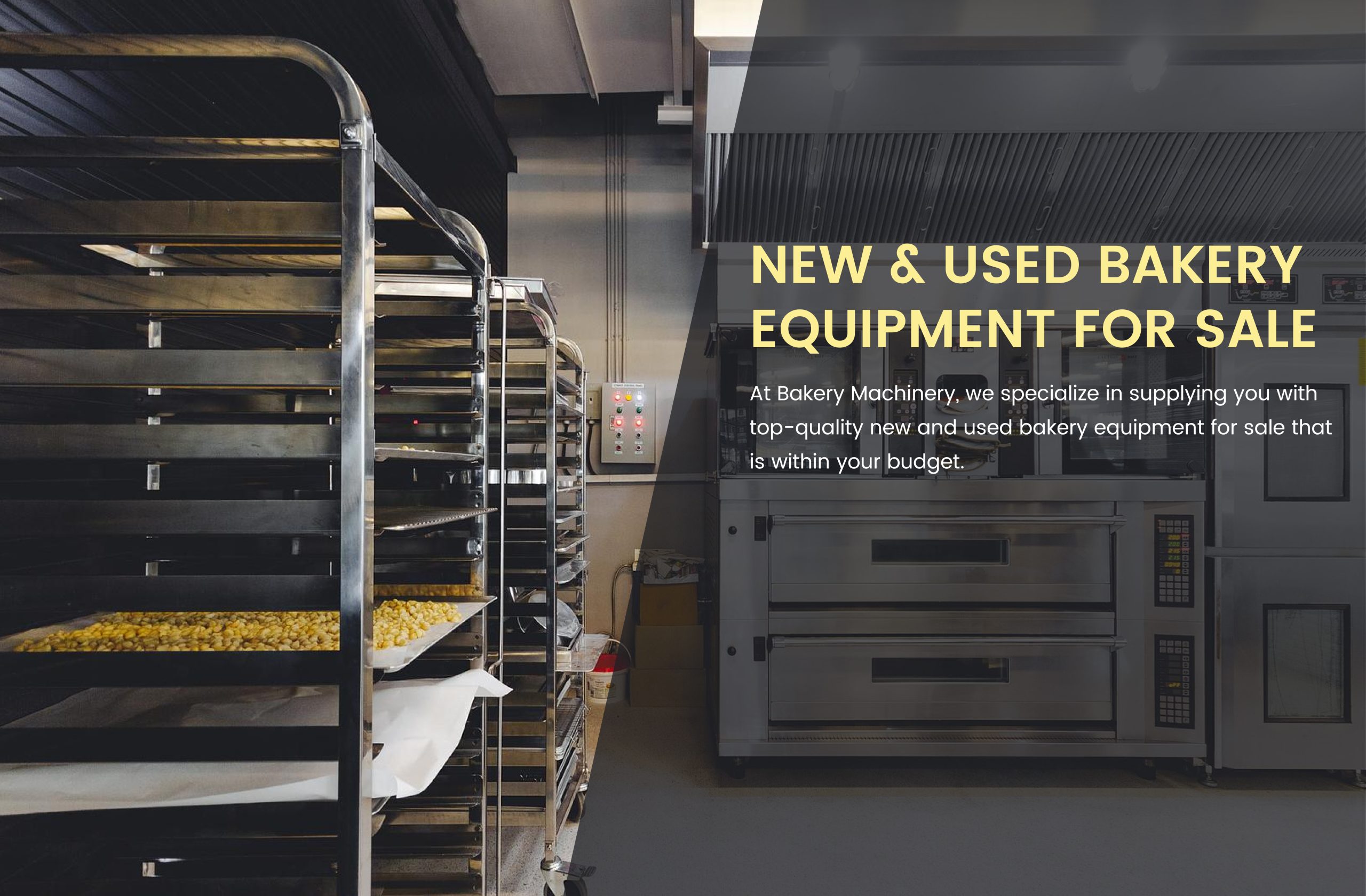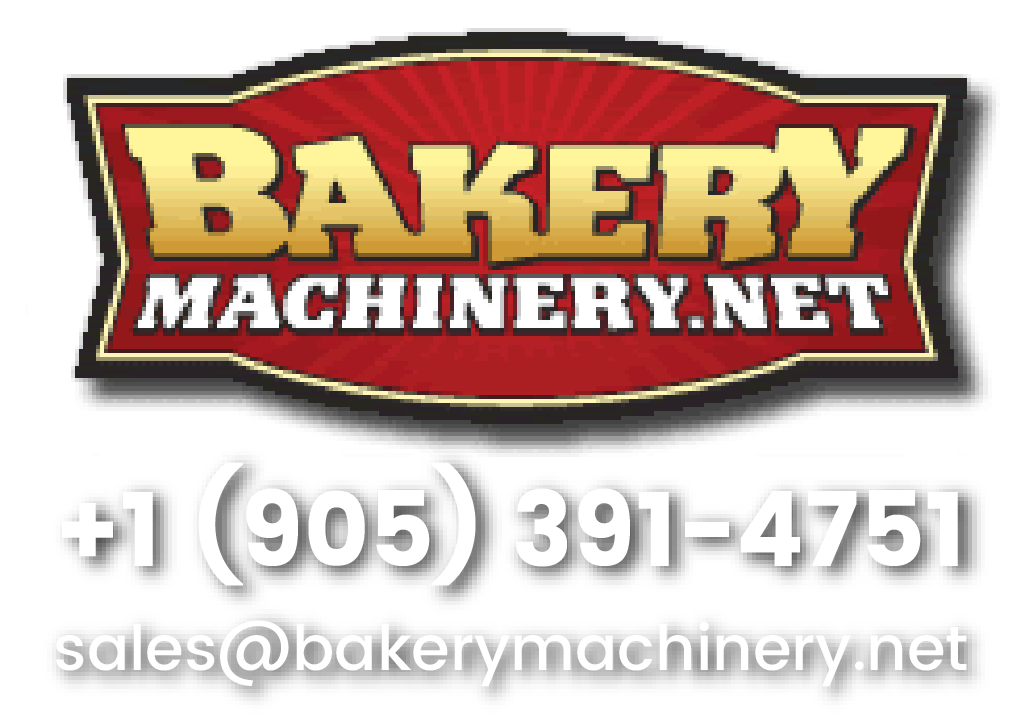Moulder Questions
Q: What is the difference between a Sheeter/Moulder and a Moulder?
A: Sheeter/Moulders are combination machines that can roll out pastry or yeast raised dough for donuts and cinnamon rolls. Breads and rolls can be efficiently sheeted and formed by using the moulding attachment. Moulders are dedicated to making breads and rolls without compromising the quality of the finished products. Our patented spring loaded roller system and dough handling features, give the baker complete control of the moulding process.
Q: I make all my breads and rolls by hand but how can I grow when I cannot find enough trained staff??
A: Bloemhof is here to help. For over 40 years we have helped bakers who demand the most of their equipment. European immigrant bakers demanded a moulder that could handle the strong, high protein flours. Our original low stress moulders are a baker’s best friend that produce excellent results. Our moulders conform to the needs of your dough and with a few simple adjustments can make beautiful artisan breads, French baguettes, pan breads, hoagies and delicate bread sticks.
Q: If I get a moulder, do I need to change my formula?
A: You may be pleasantly surprised. Using our line of low stress moulders usually does not require any formula changes. Oven spring is often superior to hand moulding, the improved crust and excellent cell structure are direct benefits of using our quality moulders. For more detailed information, contact our staff on your special needs.
Q: What types of dough can Bloemhof moulders handle?
A: Nearly every type of bread dough can be moulded. Rye, double rye, white, whole wheat, sourdough, fruit breads, gluten-free, spelt, low to high hydration, low carb, ciabatta, sweet breads, egg breads, multi-grain, yeast breads, sprouted grains, to name a few…
Q: Don’t I need a French Bread Moulder to make baguettes?
A: No. What you need for making baguettes is a gentle moulder which reduces dough stress to prevent toughening of the gluten structure. Our line of artisan moulders have spring loaded roller systems to gently degas the dough. Furthermore, the extra long pressure plate system with an adjustable curvature, gently extends the baguettes resulting in an improved cell structure and a seamless finish.
Q: How long of a baguette can I make?
A: 26″, 32″ and even 36″.
Most of our customers make 20″ or 22″ long baguettes on our Artisan Moulders (860L, EXP 1060, EXP 1260, EXP 220 etc.) and because we use a low stress moulding system, the baguettes are very relaxed and easily stretch out to 28″ or more simply by picking them up and giving them a gentle whipping action. We even have adjustable curvature plates to make the baguettes dead straight or tapered as needed.
For higher production levels baguettes can be moulded on our Artisan Moulders and automatically transfer to a finishing moulder like our SIMPLEX 30BXL or 36BXL to extend them to their finished lengths.
Q: Do I need to pre-round the dough pieces before moulding?
A: No. Scaled pieces from your divider or hand scaled blocks work equally well.
The dough should be one piece, if there are two or more pieces that make the scaled weight, they should be gently folded in before placing it into the hopper. If the pieces are rectangular, then it is important that they are always placed in the dough hopper in a consistent orientation; lengthwise for short loaves, widthwise for long loaves and baguettes.Q: Why do I need to change pressure plates?
A: One large plate can form all your products but the shorter dough pieces will be tapered and the ends will be unfinished, the lengths will be inconsistent and a seam will show. The finished appearance will be more like those produced with a French Bread Moulder. The advantage of using the correct plate width will be finished ends, consistent length and a seamless finish.
Many products can be made on one pressure plate. With an 8″ wide pressure plate you can produce a 32 oz. rye loaf, a 20 oz. pan loaf, an 8″ sub bun, hoagie rolls, demi-baguettes or a 3/4 oz. bread stick. All the products will have finished ends and will be consistent in length, thanks to the full height side guides . On most of our moulders, pressure plates are available from 3″ to 20″ wide allowing you to make everything from 1/2 oz. rolls to 5 pound loaves. Curved plates are available to make tapered rolls, dinner rolls, challah stripes and NY rye breads. See Moulded Results in our Photo Gallery
Q: Are specific plates required for all products?
A: When blunt ends are required, the length of the raw product will be equal to to the width of the pressure plate required. Small products like rolls, hotdog buns and subs will grow in 1/2″ to 1″ in length as they proof and bake. Larger loaves will gain 1″ to 2″ in length. If you are making pan breads, usually the plate width required will be about 1″ less than the pan length.
If you want a straighter loaf that fills the end of the pan more evenly or are making pullman loaves, the sideguides can be adjusted up to 3/4″ away from the pressure plate sides. This effectively makes a 1 1/2″ longer loaf that fills the pan completely. Moreover, the dough piece will have a “dogbone” shape as more dough will gather at the ends. This will make a loaf that fills the pan and have more equal sized slices from end to end. See Moulded Results in our Photo Gallery
Q: How long does it take to change plates?
A: Plates can be changed in only 30 to 60 seconds.
Q: What moulding settings do I use?
A: Moulding settings are where adjustments are made to the infeed hopper, spring loaded roller control system, pressure plate settings and of course the plate sizes. Because there are many combinations and so many types of dough, it is very hard for us to tell you how to set your machine. Start by studying your “User Manual” and then making a spread sheet like this for yourself. Testing on a small batch on an off day is best.
Q: How can I tell if the Infeed Guides are set right?A: Set them to the approximate width of the scaled dough piece. Always keep the Infeed Guides equally spaced from the center. When the dough enters the Pressure Plate, it should not be longer than the width of the plate. If it is too wide, adjust the guides closer together.
Q: How do I know if the Dough Roller Control Panel setting is correct?
A: If the surface of the dough appears torn after passing through the Dough Rollers, adjust the Control Panel at a smaller number. The higher the number, the higher the spring pressure on the dough. Higher pressure will give you a tighter crumb structure and a lower number will result in larger holes in your bread. Generally you set the Control Panel to the type and hydration level of your dough rather than the weight.
Q: How can I tell if the Pressure Plate settings are correct?
A: If the finished dough piece appears rough or torn, the Pressure Plate is too close to the Conveyor Belt. If the dough pieces have a large visible seam and unfinished ends, the Pressure Plate should be adjusted closer to the Conveyor Belt. The Pressure Plate should never be set to have the front (or entry) end closer to the Conveyor Belt than the back (or exit) end.
Rounder Questions
Q: Bloemhof now manufactures a rounder?
A: Yes! Numerous customer requests for a better machine capable of producing large rounds without damaging the dough skin, led to more than two years of research and development of our BM-42 Boule Moulder.
Q: Why do we call it a Boule Moulder?
A: Boule is the French word for a round ball. Unlike a traditional rounder, the dough pieces are tightly moulded by stretching the gluten structure in one direction exactly as done by a skilled baker. This creates a seam at the bottom that is then placed down on the pan. With unique and separate controls for stroke, rotation and kneading, the BM-42 kneads your dough from 3 to 75 times in a single pass. The “Advanced Hand Action Moulding System” sets it apart, as it allows you to control how much or how little you work the dough.
Q: What types of dough can it round?
A: The Boule Moulder can round old world rustic breads, rye, sourdough, multi-grain, specialty breads, pizza dough and high hydration doughs (85%) with long fermentations are easily done in a single pass. Specialty breads with raisins, fruits, olives, cheese and honey are handled without sticking. These added ingredients are folded in and incorporated better into the dough preventing loss of scale weight and improved baking with less scorching. The Boule Moulder can be used as an initial rounder (or pre-moulder) prior to intermediate proofing and as a final moulder for making round loaves.
Q: What size of dough pieces can I round?
A: The smallest piece weight is about 6 ounces (170gm) and still have full control of the dough ball. Smaller pieces can be more efficiently rounded on a semi-automatic divider/rounder or a continuous divider/rounder. The maximum rated size is 4-1/2 pounds (2kg) but larger boules up to 6-1/2 pounds (3kg) have been done successfully.
Bagging Questions
Bag Specifications? (Click Here)
5 Easy Steps to Bag Bread. (Click Here)
Q: Why bag using a vertical bagger?
A: Vertically bagging bread was pioneered by Bloemhof 30 years ago. This design was modeled after the common bread chute. Each bag automatically inflates with the Mini-Vert Airbagger blower. The vertical design prevents the bread slices from shifting and tearing the bag when loading the bread.
Q: Where can I mount my vertical bagger?
A: You may mount the bagger to most bread slicers using the optional adjustable mounting bracket. This allows you to position the bagger conveniently for the operator and swing it away when cleaning or servicing the slicer. Table brackets are also available.
Q: How fast is the Mini-Vert Airbagger?
A: You can bag up to 1,200 products per hour but the slicer becomes the slowest point. Most gravity feed slicers can slice about 400 to 500 loaves per hour. Our customers tell us that their staff manually bagging can only bag 100 to 150 loaves per hour and see immediate improvements of 3 times faster production.
(see video)Q: What type of bags can I use?
A: Wicketed polyethylene and polypropylene bakery bags can be use on the Mini-Vert and Super 12 Airbaggers. For more detailed information see our Bag Specifications.
Q: How much will I save?
A: Our customers tell us that they save 3 to 4 cents per package. Depending on the volume of bread that you do, our baggers can pay for themselves in a few weeks to a few months.
Q: If vertical bagging is so great, why do you make the Super 12 Horizontal Airbagger?
A: There are some products than lend themselves to horizontal bagging.
◦Pita, Tortillas & Pizza Shells
◦Hamburger & Hotdog Buns
◦Sub & Hoagie Buns
◦Artisan Breads
◦Bagels & Muffins
◦Finger Rolls
The unique design allows you to organize your product on the loading deck and simply push it into the opened bag. The adjustable wings hold open the bag for product entry. You can still bag breads (sliced or unsliced) but if you do a lot of bread then it is best to buy both a vertical bagger for breads and a horizontal bagger other products.

